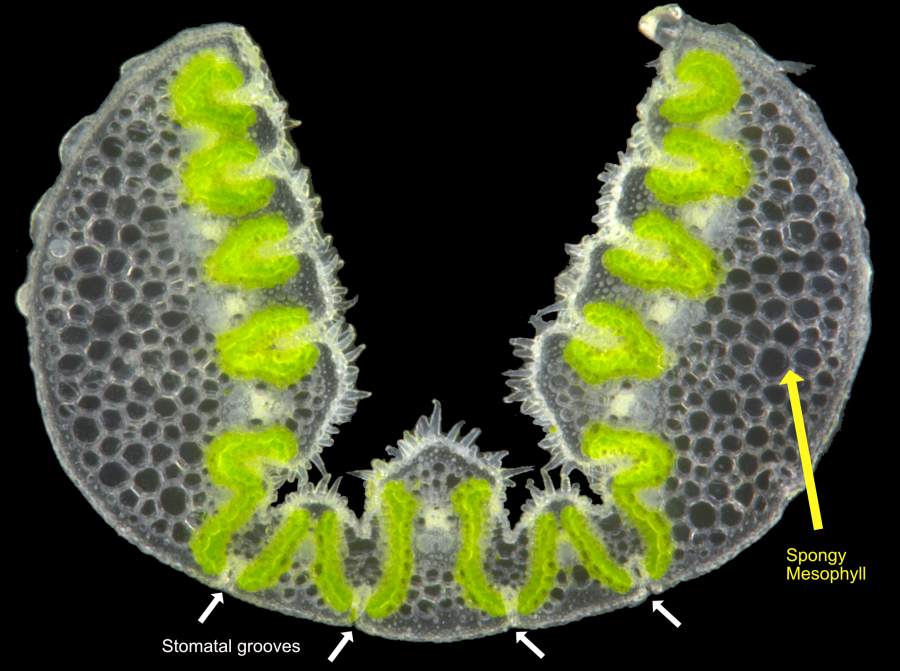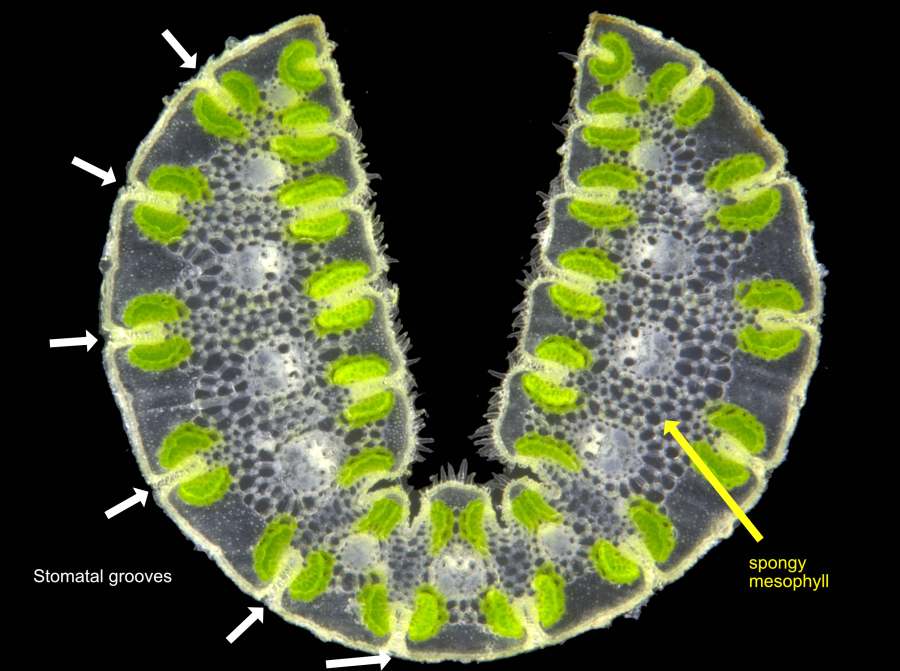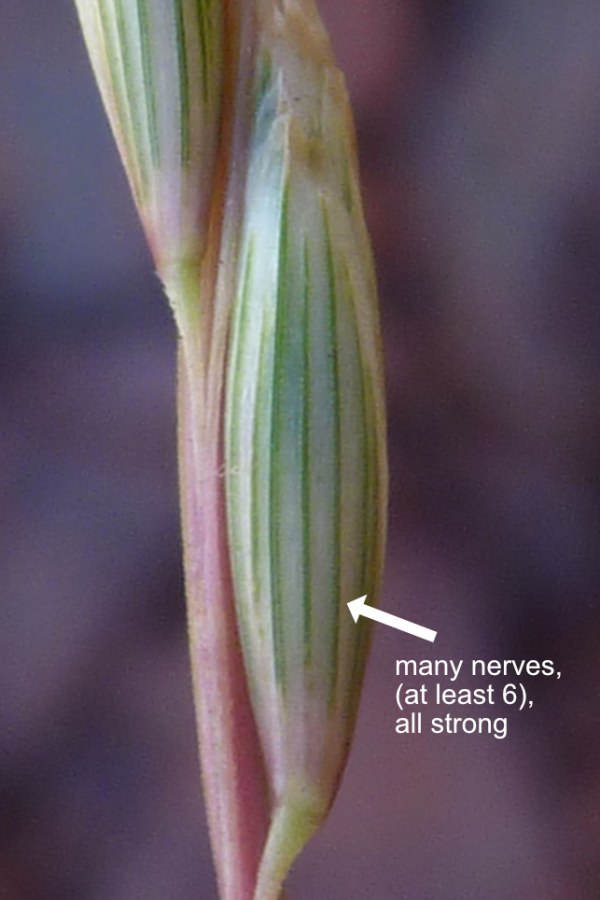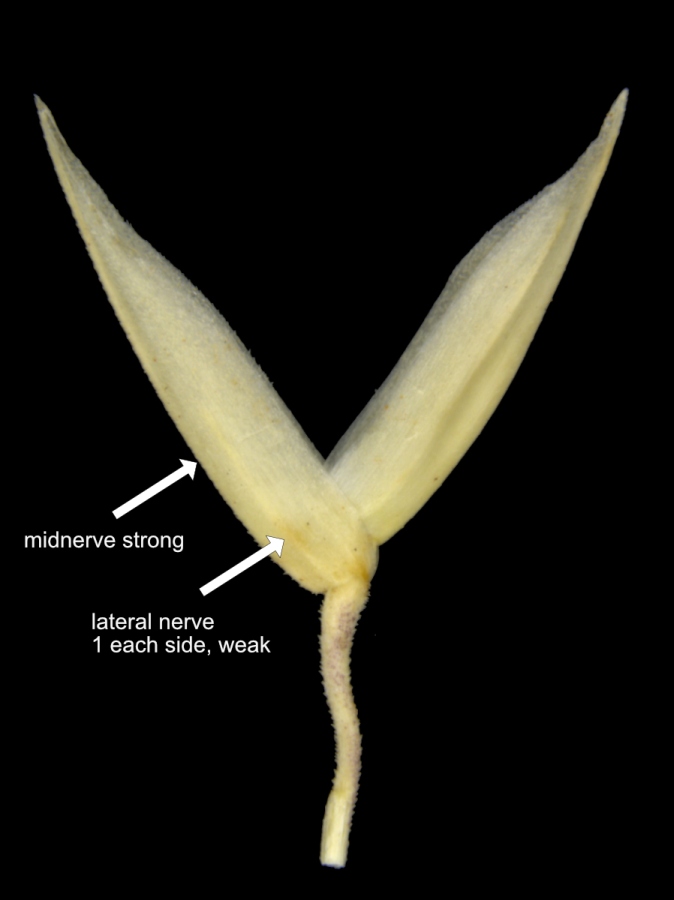Phylogeny and species-groups
A preliminary phylogeny of Triodia was presented in Toon et al. (2015), although names used therein need to be applied with caution, since taxonomic revision has altered many species boundaries since then. Several sub-generic groupings were recovered by Toon et al. (2015), and a modified version of those groups is used here, with unique informal names coined here for each group. The Pilbara species can be easily sorted into three major phylogenetic lineages, here called the Soft group, the Basedowii group, and the Angusta-Wiseana group.
The Soft group contains all those species with epistomatous (soft-type) leaf anatomy. Although this is an anatomical feature best seen in magnified leaf sections, soft Triodia species are easily recognized with experience, because the leaves, while sharp, are more flexible and less formidable than in other groups. Species in the Soft group are often resinous. Any resinous Triodia belongs to the Soft group, but a few Soft species do not develop resin. Most species have 1–5 glume nerves, like the Angusta-Wiseana group below, however some species close to T. epactia and T. schinzii can have up to 7–13 nerves.
Included Soft Group Pilbara species:
- Triodia avenoides M.D.Barrett, ined.**
- Triodia basitricha M.D.Barrett
- Triodia biflora Lazarides
- Triodia degreyensis M.D.Barrett, ined.**
- Triodia epactia S.W.L.Jacobs
- Triodia karijini M.D.Barrett
- Triodia melvillei (C.E.Hubb.) Lazarides
- Triodia pisoliticola Trudgen & M.D.Barrett, ined.**
- Triodia pungens R.Br.
- Triodia schinzii (Henrard) Lazarides
- Triodia sp. Mt Ella (M.E. Trudgen 12739)
- Triodia veniciae M.D.Barrett, ined.**


The other two groups contain species with amphistomatous (hard-type), rigid, needle-like leaves, and never have resin.
The Basedowii group species have rigid, amphistomatous (hard-type) leaves, and glumes with more than six nerves. The Pilbara is a centre of diversity for this group, which was thoroughly revised by Anderson et al. (2016, 2017a,b). Aside from T. basedowii, the group contains T. lanigera, and many recently-described species such as T. vanleeuwenii (previously known as T. sp. Shovelanna Hill). The Basedowii group as used here has a different composition of species to the ‘Basedowii group’ of both Lazarides (1997) or Lazarides et al. (2005).
Included Basedowii group Pilbara species:
- Triodia basedowii E.Pritz.
- * Triodia birriliburu B.M.Anderson, ined.**
- Triodia chichesterensis B.M.Anderson
- Triodia glabra B.M.Anderson & M.D.Barrett, ined.**
- *Triodia infesta B.M.Anderson & M.D.Barrett, ined.**
- Triodia lanigera Domin
- Triodia mallota B.M.Anderson & M.D.Barrett, ined.**
- * Triodia plurinervata N.T.Burb.
- Triodia scintillans B.M.Anderson & M.D.Barrett, ined.**
- Triodia vanleeuwenii B.M.Anderson & M.D.Barrett, ined.**


The Angusta-Wiseana group contains all the species with amphistomatous (hard-type) leaves and glumes with 1–5 nerves. It contains some of the most widespread and common Pilbara species such as T. angusta, T. brizoides, T. longiceps and T. wiseana. Genetic support for the inclusion of T. longiceps and T. spicata in this group is weak, and it is possible that they belong in separate groups, but they are included here for simplicity, pending further study.
Included Angusta-Wiseana group Pilbara species:
- Triodia angusta N.T.Burb.
- Triodia brizoides N.T.Burb.
- Triodia longiceps J.M. Black
- Triodia secunda N.T.Burb.
- * Triodia spicata N.T.Burb.
- Triodia wiseana C.A.Gardner
- Triodia longiceps X wiseana hybrids
*Not known from the Pilbara bioregion proper, but occurs in neighbouring bioregions.
**Some species names were still unpublished at time of release of version 1 of SpiKey, but have been submitted for publication. It is not intended to publish or validate any these names in SpiKey, and hence these names are referred to ined. (ineditus – unpublished and not yet validated), with a reference to their place of intended publication their profile page.
